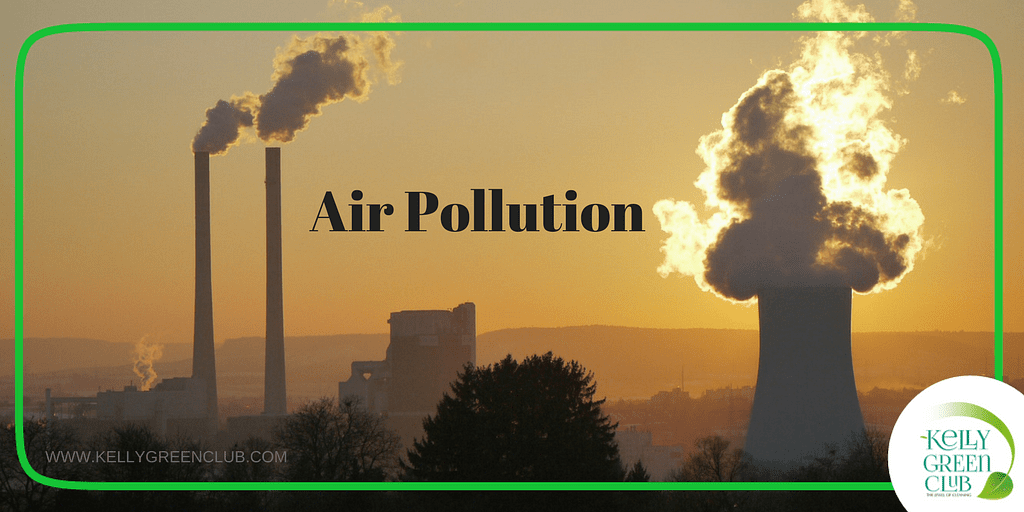Pollution is now a common place term, that our ears are attuned to. By definition, pollution refers to any matter that is “out of place”. In other words, it is what happens when toxins, contaminants, and other harmful products are introduced into an environment, disrupting its normal patterns and functions.
Air pollution it occurs when any harmful gases, dust, smoke enters into the atmosphere and makes it difficult for plants, animals and humans to survive as the air becomes dirty, and cause damage to the natural environment.
Whereas some causes of pollution are entirely natural – being the result of sudden changes in temperature, seasonal changes, or regular cycles – others are the result of human impact (i.e. anthropogenic, or man-made).
The Ozone layer considered crucial for the existence of the ecosystems on the planet is depleting due to increased pollution. Global warming, a direct result of the increased imbalance of gases in the atmosphere has come to be known as the biggest threat and challenge that the contemporary world has to overcome in a bid for survival.
Causes of Pollutants
Natural Causes
Natural forms of pollution are those that result from naturally-occurring phenomena. This means they are caused by periodic activities that are not man-made or the result of human activity. What’s more, these sources of pollution are subject to natural cycles, being more common under certain conditions and less common under others.
Dust and Wildfires:
In large areas of open land that have little to no vegetation, and are particularly dry due to a lack of precipitation, wind can naturally create dust storms. This particulate matter, when added to the air, can have a natural warming effect and can also be a health hazard for living creatures. Particulate matter, when scattered into regions that have natural vegetation, can also be a natural impediment to photosynthesis.
Wildfires are a natural occurrence in wooded areas when prolonged dry periods occur, generally as a result of season changes and a lack of precipitation. The smoke and carbon monoxide caused by these fires contribute to carbon levels in the atmosphere, which allows for greater warming by causing a Greenhouse Effect.
Animal and Vegetation:
Animal digestion (particularly by cattle) is another cause of natural air pollution, leading to the release of methane, another greenhouse gas.
Volcanic Activity:
Volcanic eruptions are a major source of natural air pollution. When an eruption occurs, it produces tremendous amounts of sulfuric, chlorine, and ash products, which are released into the atmosphere and can be picked up by winds to be dispersed over large areas.
Fossil-Fuel Emissions:
The combustion of fossil fuels like coal, petroleum and other factory combustibles is a major cause of air pollution. These are generally used in power plants, manufacturing facilities (factories) and waste incinerators, as well as furnaces and other types of fuel-burning heating devices.
Agriculture and Animal Husbandry:
Greenhouse gas emissions from agriculture (aka. the cultivation of crops and livestock) is created by a combination of factors, one is the production of methane by cattle. Another cause is deforestation, where the need for pastureland and growing fields requires the removal of trees that would otherwise sequester carbon and clean the air.
Waste:
Landfills are also known to generate methane, which is not only a major greenhouse gas, but also an asphyxiant and highly flammable and potentially hazardous if a landfills grow unchecked. Population growth and urbanization have a proportional relationship with the production of waste, which in turn leads to greater demand for dumping grounds that are far removed from urban environments. These locations thus became a significant source of methane production.
Effects of Air pollution
1. Respiratory and heart problems: The effects of Air pollution create several respiratory and heart conditions along with Cancer, among other threats to the body.
2. Global warming: With increased temperatures world wide, increase in sea levels and melting of ice from colder regions and icebergs, displacement and loss of habitat have already signaled an impending disaster if actions for preservation and normalization aren’t undertaken soon.
3. Acid Rain: Harmful gases like nitrogen oxides and sulfur oxides are released into the atmosphere during the burning of fossil fuels. When it rains, the water droplets combines with these air pollutants, becomes acidic and then falls on the ground in the form of acid rain. Acid rain can cause great damage to human, animals and crops.
4. Eutrophication: Eutrophication is a condition where high amount of nitrogen present in some pollutants gets developed on sea’s surface and turns itself into algae and and adversely affect fish, plants and animal species. The green colored algae that is present on lakes and ponds is due to presence of this chemical only.
5. Effect on Wildlife: Just like humans, animals also face some devastating affects of air pollution. Toxic chemicals present in the air can force wildlife species to move to new place and change their habitat. The toxic pollutants deposit over the surface of the water and can also affect sea animal
6. Depletion of Ozone layer: Ozone exists in earth’s stratosphere and is responsible for protecting humans from harmful ultraviolet (UV) rays. Earth’s ozone layer is depleting due to the presence of chlorofluorocarbons, hydro chlorofluorocarbons in the atmosphere. As ozone layer will go thin, it will emit harmful rays back on earth and can cause skin and eye related problems. UV rays also have the capability to affect crops.
Solutions for Air Pollution
1. Use public mode of transportation: Encourage people to use more and more public modes of transportation to reduce pollution. y.
2. Conserve energy: Switch off fans and lights when you are going out. You can save the environment from degradation by reducing the amount of fossil fuels to be burned.
3. Understand the concept of Reduce, Reuse and Recycle: Do not throw away items that are of no use to you. In-fact reuse them for some other purpose.
4. Use energy efficient devices: CFL lights consume less electricity as against their counterparts. They live longer, consume less electricity, lower electricity bills and also help you to reduce pollution by consuming less energy.
Several attempts are being made world wide on a personal, industrial and governmental levels to curb the intensity at which Air Pollution is rising and regain a balance as far as the proportions of the foundation gases are concerned. This is a direct attempt at slacking Global warming.



